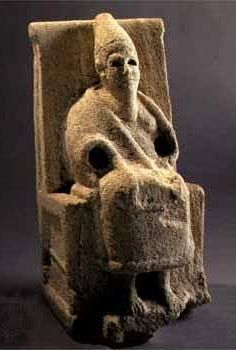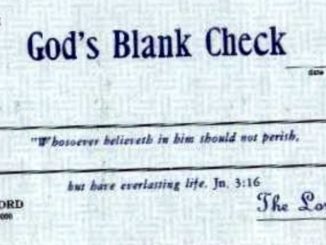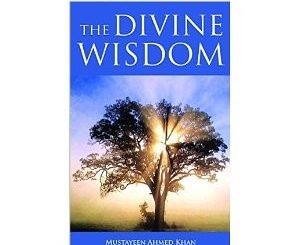
Chemosh was the national deity of the Moabites whose name most likely meant “destroyer,” “subduer,” or “fish god.” While he is most readily associated with the Moabites, according to Judges 11:24 he seems to have been the national deity of the Ammonites as well. His presence in the Old Testament world was well known, as his cult was imported to Jerusalem by King Solomon (1 Kings 11:7). The Hebrew scorn for his worship was evident in a curse from the scriptures: “the abomination of Moab.” King Josiah destroyed the Israelite branch of the cult (2 Kings 23).
Information on Chemosh is scarce, although archaeology and text can render a clearer picture of the deity. In 1868, an archaeological find at Dibon provided scholars with more clues to the nature of Chemosh. The find, known as the Moabite Stone or Mesha Stele, was a monument bearing an inscription commemorating the c. 860 BC endeavors of King Mesha to overthrow the Israelite dominion of Moab. The vassalage had existed since the reign of David (2 Samuel 8:2), but the Moabites revolted upon the death of Ahab. Consequently, the Moabite Stone contains the oldest existing inscription of a Semitic alphabet. Mesha, by way of textual example, attributes his victory over the Israelites and their god to Chemosh stating “And Chemosh drove him before my sight.” (2 Kings 3:5)
The Moabite Stone is a priceless source of information concerning Chemosh. Within the text the inscriber mentions Chemosh twelve times. He also names Mesha as the son of Chemosh. Mesha made it clear that he understood Chemosh’s anger and the reason he allowed the Moabites to fall under the rule of Israel. The high place on which Mesha oriented the stone was dedicated to Chemosh as well. In summary, Mesha realized that Chemosh waited to restore Moab in his day, for which Mesha was grateful to Chemosh.
Chemosh seems to have also had a taste for blood. In 2 Kings 3:27 we find that human sacrifice was part of the rites of Chemosh. This practice, while gruesome, was certainly not unique to the Moabites, as such rites were commonplace in the various Canaanite religious cults, including those of the Baals and of Moloch. Mythologists and other scholars suggest that such activity may be due to the fact the Chemosh and other Canaanite gods such as the Baals, Moloch, Thammuz, and Baalzebub were all personification of the sun, or of the sun’s rays. They represented the fierce, inescapable, and often consuming heat of the summer sun (a necessary but deadly element in life; analogs may be found in Aztec sun worship).
As subtext, Chemosh and the Moabite Stone seem to reveal something of the nature of religion in Semitic regions of the period. Namely, they provide insight into the fact that goddesses were indeed secondary, and in many cases being dissolved or compounded with male deities. This may be seen in the Moabite Stone inscriptions where Chemosh is also referred to as “Asthor-Chemosh.” Such synthesis reveals the masculinization of Ashtoreth, a Canaanite goddess worshipped by Moabites and other Semitic peoples. Biblical scholars have also noted that Chemosh’s role in the Moabite Stone inscription is analogous to that of Yahweh in the book of Kings. Thus, it would seem that Semitic regard for respective national deities operated similarly from region to region.
To learn more about Chemosh and related topics, visit the Institute of Biblical Anthropology at http://www.tioba.org and https://www.facebook.com/biblicalanthropology/.
Proudly WWW.PONIREVO.COM
by Judd Burton



